I love dogs with jobs. I find it so interesting to watch them work, think about how they’re trained and see what they are capable of. One of the careers that’s particularly fascinating for me is livestock guardian dogs.
Dogs who are a balance of gentle and fierce. Brave and trustworthy. Independent and reliable.
These dogs live with livestock and their job is to protect them and the farm from predators. But how does a dog know a goat is good and a fox is bad? How do they view chickens as friends and not food?
To learn more about livestock guardian dogs, or LGDs, I reached out to April Mantle, who along with her husband raises goats and chickens on 200 acres here in Ontario. April has two livestock guardian dogs, Hayley and Mathias.
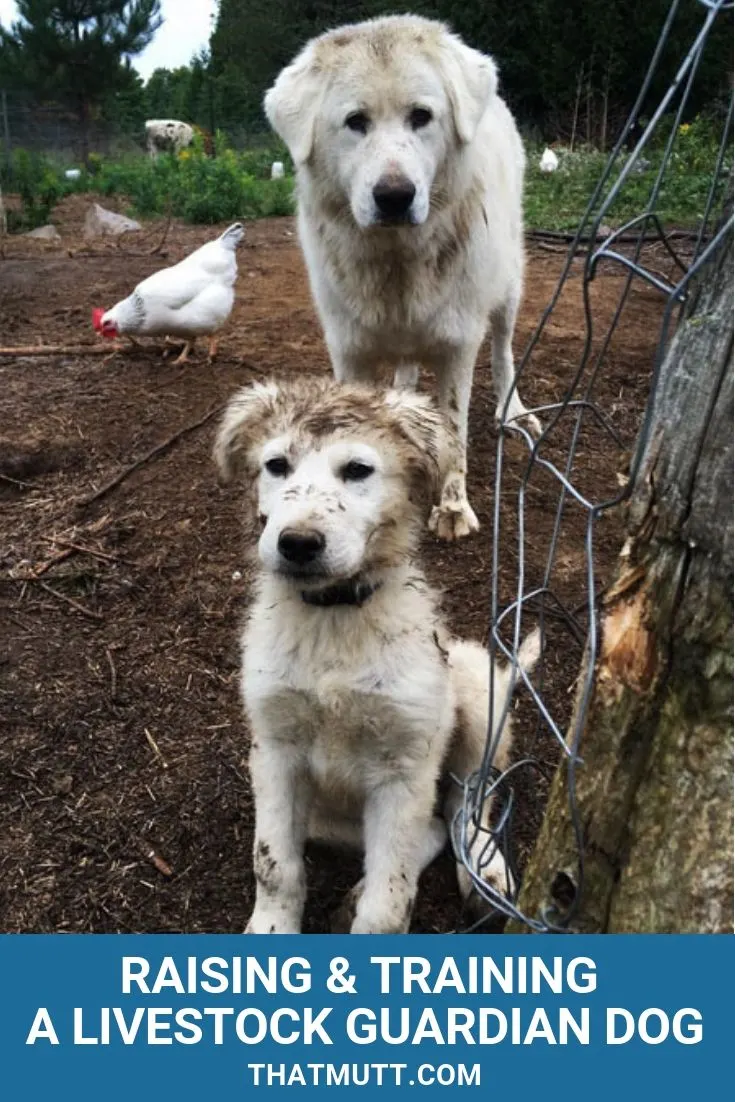
Breeds and behaviors of livestock guardian dogs
Both Hayley and Mathias are Maremma Sheepdogs. April clarifies that while the term “livestock guardian dog” may seem like a job description, it’s actually a breed classification, like “herding dog” or “hunting dog.”
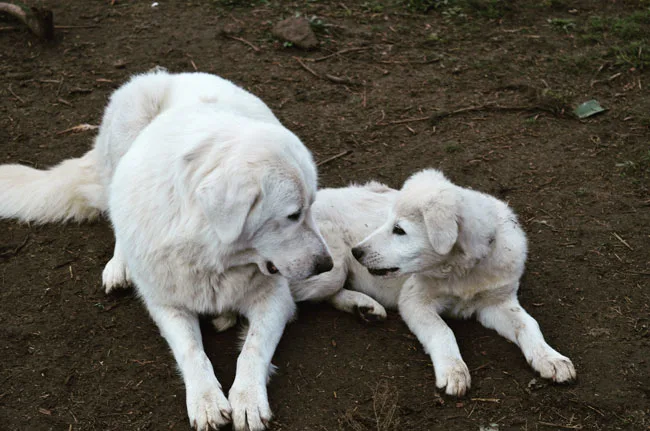
The most common LGD breeds are Great Pyrenees, Maremma Sheepdog, Akbash, Anatolian Shepherd, Kangal, Komondor and Spanish Mastiff.
Each breed is slightly different in its approach. For example, some will bark and rarely attack. Others are more aggressive and will almost always engage a predator.
However, barking is a LGD’s first line of defense—a reason April says that LGDs don’t make good neighbours.
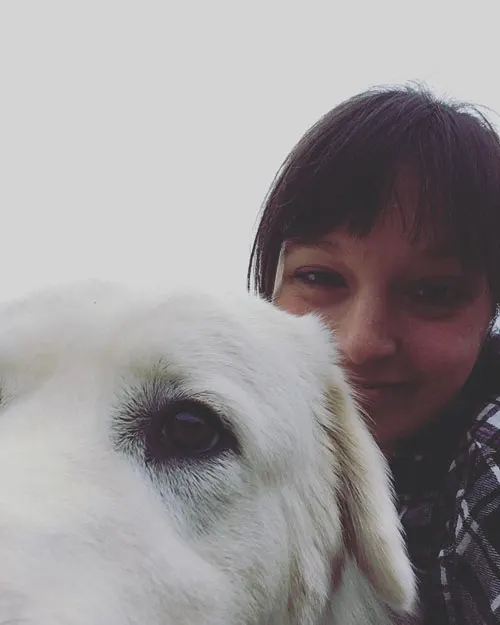
LGDs are very different from your average guard dog. Most guard dog breeds have a high prey drive, which makes them want to hunt or chase an intruder.
A livestock guardian needs a low prey drive. Bouncing baby animals or running chickens can easily trigger a dog to chase. But for LGDs, their instinct to protect comes from their bond with their livestock.
In fact, many LGDs become anxious when they’re away from their charges.
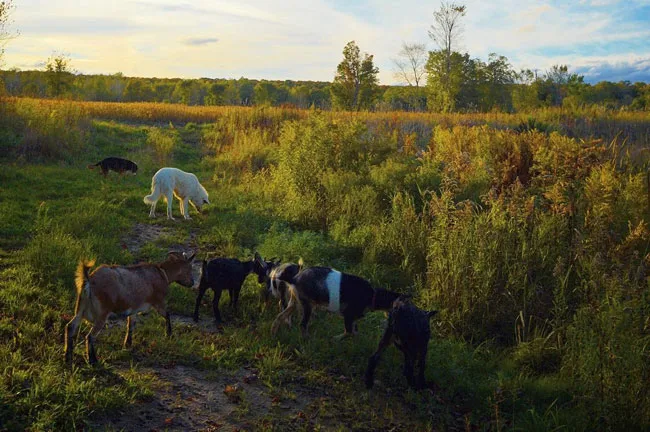
The qualities that April views as most important in her dogs are protective, trustworthy, observant and self-thinkers.
The dogs need to be able to handle situations without direction from the farmer, but sometimes their independence can lead to frustration.
April explains. “When you give a LGD a command they will decide if they want to listen to you or if they should handle the situation without your input.
“They want to please you, but if it goes against their instincts or their view of a situation they will ignore you.”
Selecting a livestock guardian dog
Once she knew the breed she wanted, April sought a puppy with working parents who were guarding livestock similar to what she wanted the puppy to guard.
“They learn a lot from their parents those first few weeks, so I like to leave the pups with their parents for a little longer,” she said.
Hayley was 10 weeks old and Mathias was 11 weeks when they joined April’s farm.
When picking a puppy, April says that the one that sits back and observes as opposed to the one playing at her feet will make the best guardian.
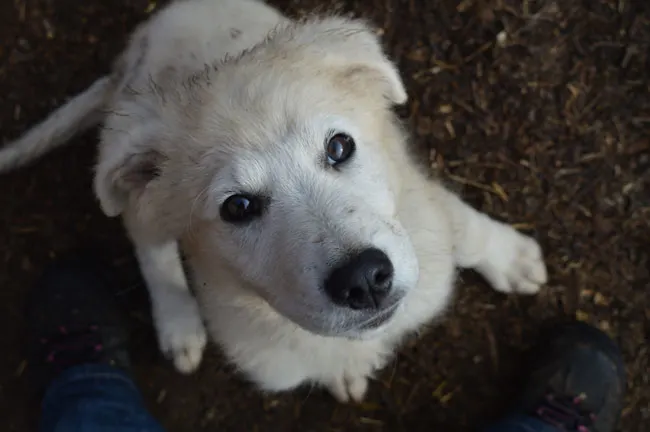
Like all puppies, exercise and boundaries are important for LGDs. Hayley got long walks every day, usually for several hours to burn off energy. She also played a lot with April’s house dogs.
Puppies’ desire to play can be devastating to birds and animals. Some animals—like the goats April raises—can also be dangerous to the dogs.
April first used a “look but don’t touch” approach, keeping Hayley in a fenced area that bordered the goat and chicken pens.
“She could see them through the fence but couldn’t play with them. As well we gave her supervised visits with the goats and chickens.”
When Hayley was about 6 months old, she moved into the chicken pen full time, but was tethered so she couldn’t chase the birds.
When Mathias came home, Hayley was already trained and working, so he skipped the kennel and went straight to being tethered.
April says, “The puppy will want to mimic the older dog, and the older dog will teach and discipline the puppy.” As he proves himself, Mathias gets more and more time off leash.
Training a livestock guardian dog
While much of LGDs behaviour is instinctual, training is still necessary.
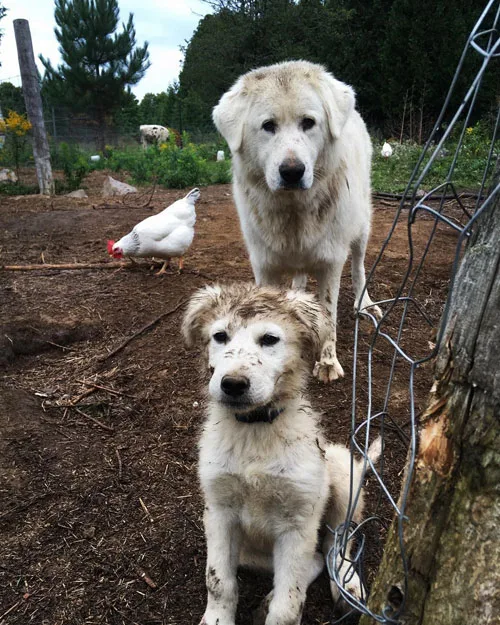
“With both of my dogs the instinct was there right from the beginning to protect. I never had to teach them to guard or protect, they just knew,” says April.
“These dogs are very sensitive. Corrections in the form of a stern voice, grabbing their collar and pulling them into a sit position, or even a time out is all I’ve needed to do to discipline them. For the most part they are very quick learners.”
Corrections are important and tell the dog what not to do, but praise is equally important to tell the dog what you do want them to do.
Good behavior—like “not staring down a baby goat, letting a chicken run by without giving it so much as a glance, walking calmly and showing submissive behavior around the livestock”—all get high praise in the form of an excited voice or belly rubs.
Wandering is often a problem with LGDs. Hayley is a scout dog and likes to check fence lines, patrol and find where a predator could potentially get in.
Mathias is a livestock dog who doesn’t go far from his charges and will hang back even if the gate is left open.
April does not tolerate wandering and relies on strong fences with electric fence as enforcement. “A wandering dog is a target and should be considered as bad as having your livestock running loose around the neighbourhood,” she says.
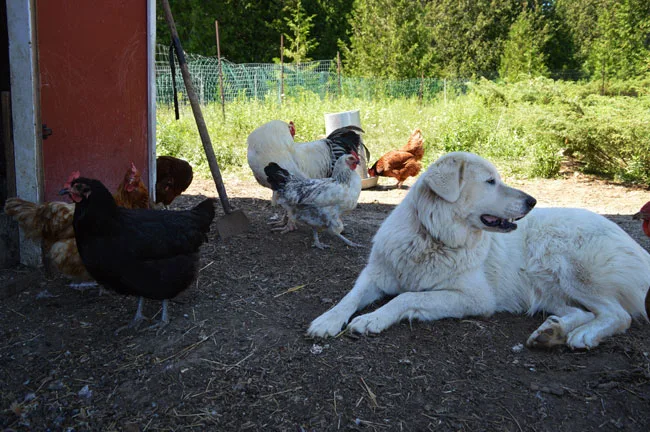
Like all dogs, LGDs need basic care like vet appointments, nail trims, fresh water, healthy food and good shelter. Vaccinations are important because these dogs are more likely to come into contact with diseases, bacteria, viruses or sick animals.
As well, flea, tick and heartworm prevention are key.
“Hayley is also prone to getting ear infections from lying out in the rain so ear cleaning is a regular part of her care routine.”
April feels strongly that socializing her dogs is critical. Without daily handling and interaction, LGDs could potentially become dangerous.
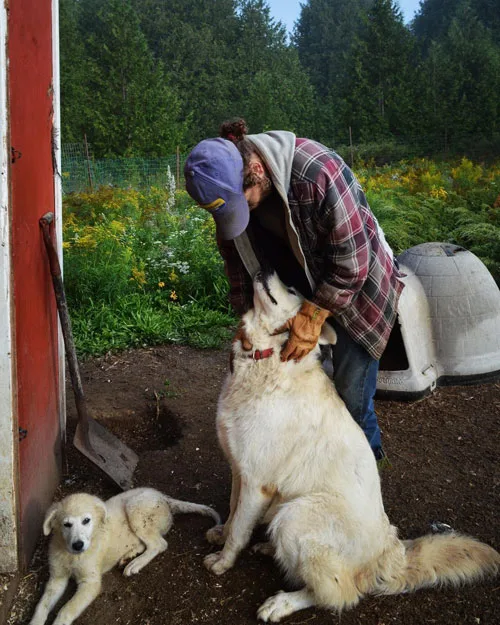
“We have a lot of farm visitors and our dogs are always allowed to say hello or intermingle with our guests. The dogs trust us enough that if we allow a stranger (to them) into the barnyard then the dogs know this person is acceptable,” April explains.
“We have heard that when we aren’t around the dogs are terrifying and no one is going through that gate, even if they’ve previously been introduced.”
Hayley and Mathias also go off farm for vet appointments, which gets them used to being handled, being around other people and other animals, and loading into vehicles.
April also incorporates town visits, the park or the local pet store or feed store (where there’s treats!) to make trips more enjoyable.
For April, as for many farmers, livestock guardian dogs are an essential part of her operation. “I literally leave them in charge of my farm’s income. I couldn’t farm without them.”
To see more of April’s life on her farm, visit her blog April Tells All or follow her on Instagram @3birchfarm. To learn more about livestock guardian dogs, April recommends the Facebook group, Learning about LGDs.
Have you seen livestock guardian dogs at work? What impresses you most about livestock guardian dogs?
Julia Preston is a blogger at Home on 129 Acres where she writes about her adventures of country living and DIY renovating. She and her family live on a 129-acre farm in Ontario, Canada. Follow Julia on Instagram here.

Mia
Wednesday 26th of July 2023
We have a new 12 week old maremma pup, we're trying to get him used to our chickens. We have him tied up next to the coop, however he constantly barks. Is it a matter of him having to get used to staying out there? We've had to tie him up because he keeps coming up to the house and we don't want him guarding the house, we want him with the animals.
Joe Greenleaf
Thursday 15th of August 2019
I have four Maremmas and they are just terrific. They prefer to be out in the rain and snow, rather than seek shelter a foot away. They're nocturnal, because the predators are.
Heather Field
Tuesday 25th of June 2019
Excellent concise introduction to the breed. Thank you, I'm sure I'll be back with questions & reports of my new Maremma (already experienced, to guard sheep & goats). Dolly comes home next week and will have 3/4 weeks to settle in before my new sheep herd join us.
Lindsay Stordahl
Wednesday 26th of June 2019
Congrats!
Elizabeth
Wednesday 14th of November 2018
Thanks for the introduction!!! We are moving to a semi remote area and thinking about putting the horse on the property and getting a guardian dog!!
Julia at Home on 129 Acres
Wednesday 14th of November 2018
I feel like I just scratched the surface, and there's so much more to learn about these dogs. Definitely check out some other resources to find the dog that's right for you. Good luck with your move.
Nancy L. Stordahl
Wednesday 14th of November 2018
What an informative piece and the photos are beautiful. Impressive dogs. I had never heard of the Maremma breed before. They must rank high on the intelligence list. (I'm pretty sure this is the breed Shelley & Lance are getting, Lindsay). I found it really interesting that when choosing a puppy, the ones that observe are often desired over the ones that play at your feet. Makes sense, I guess. Thanks for the post. I enjoyed reading it and learning about livestock guardian dogs.
Julia at Home on 129 Acres
Wednesday 14th of November 2018
It seems like calmness is a very desirable quality versus too much energy.
Lindsay Stordahl
Wednesday 14th of November 2018
Yes, this is the breed they are getting! I had never heard of it until this year.